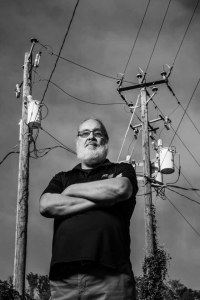![]() Somebody asked me the other day what one critical element is missing from the rural broadband landscape. My response was developmental capital – money that does the early leg work to turn conceptual projects into shovel-ready projects. Communities and small carriers everywhere struggle with the lack of easy funding aimed at identifying projects and getting them ready to seek funding.
Somebody asked me the other day what one critical element is missing from the rural broadband landscape. My response was developmental capital – money that does the early leg work to turn conceptual projects into shovel-ready projects. Communities and small carriers everywhere struggle with the lack of easy funding aimed at identifying projects and getting them ready to seek funding.
Communities everywhere decry the fact that nobody is investing in new broadband in their community. More times than not, this is due to having nobody willing to spend the development costs needed to define a viable broadband project. There are a few key elements that are needed for any new telecom project. First is feasibility engineering that is done in enough detail to understand the cost of a network needed in a community. Next is market research to understand the potential market demand for buying broadband and other products. Also needed us a financial business model that looks to see if a project can be successful and meet investor requirements. The final part of the development effort is finding the funding needed to make a project work, be that grants, equity, bank loans, or municipal bonds. These development steps are not inexpensive, and it can easily cost as much as several hundred thousand dollars to create a project that can be considered as shovel-ready.
There was a time in the past when this role was played by big banks. Cities or carriers could borrow the money for the developmental costs of a new telecom or other infrastructure projects. But over time this changed. For several reasons banks lost interest in funding infrastructure – not just telecom networks but everything else like roads, electric grids, you name it. The municipal world took up this slack by moving almost all municipal funding to bonds. But in doing so, it became harder to fund the development stages. Assuming a community is credit-worthy, it’s relatively easy to raise bond money to build a new telecom network or a highway – but it’s hard to fund the development work to make such projects shovel-ready to go for bonding.
This had even bigger consequences for commercial companies. Big companies like AT&T or Verizon self-fund project development. They internally fund the engineering effort to consider new projects. The ones that pencil in with good results get built and bad ones are scrapped.
Communities always ask me why nobody comes and builds fiber in their community. They look at me with puzzlement when I tell them that it’s the lack of development capital for ISPs. Small and medium ISPs don’t have a budget for project development where they can spend a few hundred thousand just to see if they should build in a new community. Most small ISPs simply chase low-hanging fruit where it’s easy to identify a profitable opportunity rather than to look at half a dozen projects to identify the most profitable one.
There are a few funding sources that cover part of the cost of development. There are foundations grants or government grants from agencies like the EDA that will fund feasibility studies to look at some of the aspects of project development. Local communities sometimes directly fund feasibility studies to look at some aspects of project development. But funding a feasibility is generall half or less of the total effort required to turn a concept into a shovel-ready project.
Lack of development funding doesn’t just affect broadband projects, but almost all infrastructure. Where it might take $150,000 or more to enable a broadband project, the cost of building new roads, dams, or other infrastructure can cost a lot more. Without an easy way to pay for the project development costs, I’ve seen communities do ridiculous things like pay for the engineering for a big road project over five or ten years to be able to afford it out of annual tax revenues.
I groaned earlier this year when I read that a few states offered to provide funding from CAREs Act monies for shovel-ready broadband projects. By that, they meant projects that could start spending money immediately since some of the pandemic-related funding has to be spent by the end of this year. They quickly found what anybody who works on broadband projects already knew – there were practically no shovel-ready projects sitting around that could launch immediately. At best there are projects at some stage along the project development timeline.
I’ve wracked my brain for years trying to find a workable solution to the lack of development capital. Some grants will pay for the most obvious parts of project development such as funding an engineering estimate of the cost of building broadband. But I’ve never seen any grants that fund the whole project development process.

